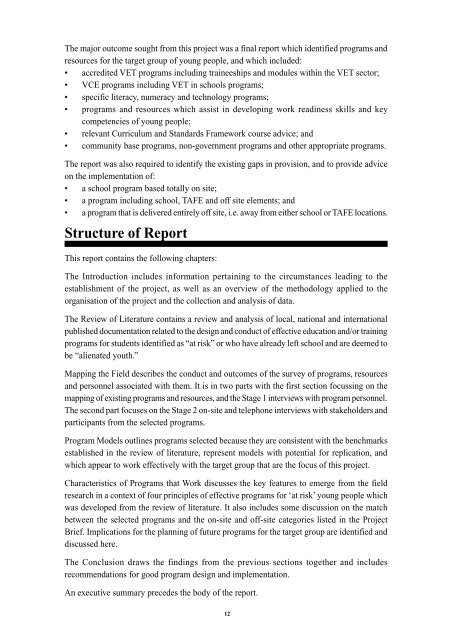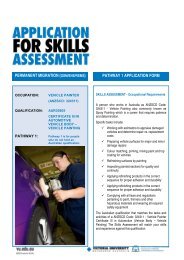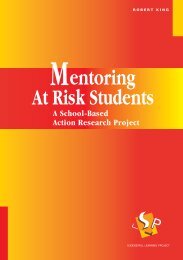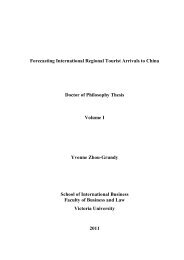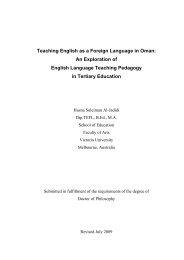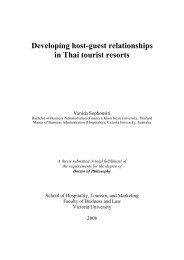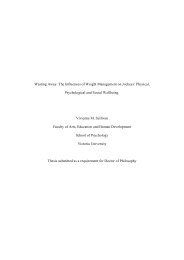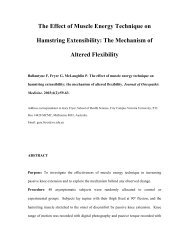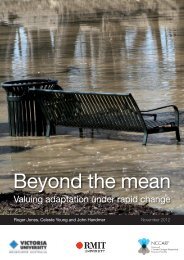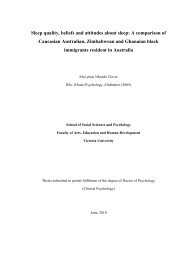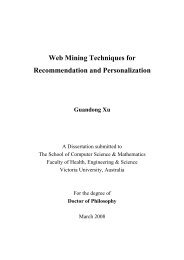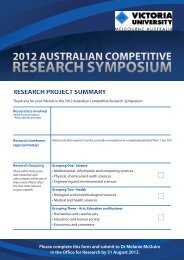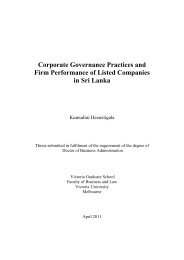Providing Education and Training for At Risk ... - Victoria University
Providing Education and Training for At Risk ... - Victoria University
Providing Education and Training for At Risk ... - Victoria University
- No tags were found...
Create successful ePaper yourself
Turn your PDF publications into a flip-book with our unique Google optimized e-Paper software.
The major outcome sought from this project was a final report which identified programs <strong>and</strong>resources <strong>for</strong> the target group of young people, <strong>and</strong> which included:• accredited VET programs including traineeships <strong>and</strong> modules within the VET sector;• VCE programs including VET in schools programs;• specific literacy, numeracy <strong>and</strong> technology programs;• programs <strong>and</strong> resources which assist in developing work readiness skills <strong>and</strong> keycompetencies of young people;• relevant Curriculum <strong>and</strong> St<strong>and</strong>ards Framework course advice; <strong>and</strong>• community base programs, non-government programs <strong>and</strong> other appropriate programs.The report was also required to identify the existing gaps in provision, <strong>and</strong> to provide adviceon the implementation of:• a school program based totally on site;• a program including school, TAFE <strong>and</strong> off site elements; <strong>and</strong>• a program that is delivered entirely off site, i.e. away from either school or TAFE locations.Structure of ReportThis report contains the following chapters:The Introduction includes in<strong>for</strong>mation pertaining to the circumstances leading to theestablishment of the project, as well as an overview of the methodology applied to theorganisation of the project <strong>and</strong> the collection <strong>and</strong> analysis of data.The Review of Literature contains a review <strong>and</strong> analysis of local, national <strong>and</strong> internationalpublished documentation related to the design <strong>and</strong> conduct of effective education <strong>and</strong>/or trainingprograms <strong>for</strong> students identified as “at risk” or who have already left school <strong>and</strong> are deemed tobe “alienated youth.”Mapping the Field describes the conduct <strong>and</strong> outcomes of the survey of programs, resources<strong>and</strong> personnel associated with them. It is in two parts with the first section focussing on themapping of existing programs <strong>and</strong> resources, <strong>and</strong> the Stage 1 interviews with program personnel.The second part focuses on the Stage 2 on-site <strong>and</strong> telephone interviews with stakeholders <strong>and</strong>participants from the selected programs.Program Models outlines programs selected because they are consistent with the benchmarksestablished in the review of literature, represent models with potential <strong>for</strong> replication, <strong>and</strong>which appear to work effectively with the target group that are the focus of this project.Characteristics of Programs that Work discusses the key features to emerge from the fieldresearch in a context of four principles of effective programs <strong>for</strong> ‘at risk’ young people whichwas developed from the review of literature. It also includes some discussion on the matchbetween the selected programs <strong>and</strong> the on-site <strong>and</strong> off-site categories listed in the ProjectBrief. Implications <strong>for</strong> the planning of future programs <strong>for</strong> the target group are identified <strong>and</strong>discussed here.The Conclusion draws the findings from the previous sections together <strong>and</strong> includesrecommendations <strong>for</strong> good program design <strong>and</strong> implementation.An executive summary precedes the body of the report.12


